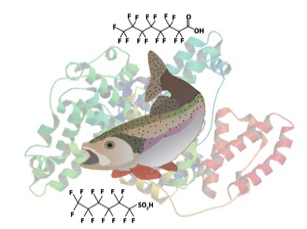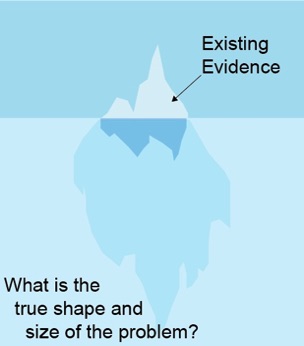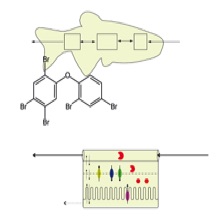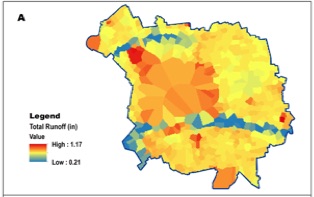What's in Your Food?
Food is a major pathway for human exposure to chemicals. The modern human food web is a complex, global system that typical models do not capture. We're developing models to understand how the modern food system influences global chemical fate and and subsequent human exposure, from the global picture of international trade to regional studies of pesticide impacts on local ecosystems.


New Methods for Emerging Chemicals
There are tens of thousands of industrial chemicals in commerce, yet information on hazardous chemical properties including persistence, bioaccumulation potential and toxicity exists for only several hundred chemicals. The assessment of existing chemicals for potential impacts on human and ecosystem health is an enormous yet critically important task.
Our goal is to create predictive models based on chemical structure that will allow us to screen among existing chemicals to identify those mose likely to cause negative impacts.
Ultimately, the tools will develop will aid in designing new chemicals with lower inherent hazard, thereby moving towards greater sustainability in the products and processes that define our modern life.
PFAS Toxicokinetics
Per and polyfluoroalkyl substances (PFAS) are pervasive and extremely persistent enviornmental contaminants. Yet very little is known about the many thousands of diverse PFAS that are currently present in the environment-- and in almost all organisms-- on a global scale. Our group develops models to explain and predict their tissue distribution and bioaccumulation potential.
Current Projects
In Silico - in Vitro - in Vivo Extrapolation
With integrative approaches including molecular dynamics, machine learning, molecular biology and in vivo exposures, our group is developing innovative approaches to exposure and effects assessment for PFAS and other legacy and emerging chemicals. The new knowledge we create can help guide policy and uncover new routes for environmental protection and remediation.


Quantifying Green Infrastructure Benefits
Climate change is worsening urban stormwater issues. Cities like Pittsburgh, with aging combined sewers and highly heterogeneous topology are dealing with record-breaking rainfall and its impacts on water quality, soil stability, and community and ecosystem health. Green infrastructrure is often suggested as an ideal sustainable solutions, but the full benefits are rarely monitored to understand dynamic performance over the long term. We are developing modeling approaches to better integrate water quality and cascading ecological benefits of networked grey and green infrastructure systems.

Network Approaches to Chemical Mixtures
Network science has successfully unlocked features of the behavior of social behavior, food webs, disease transmission, and even neurological signalling. Could it be used to gain new insights into the degradation of complex mixtures in the environment? We are exploring ways network properties could help to identify problematic transformation products and to guide the application of analytical methods.